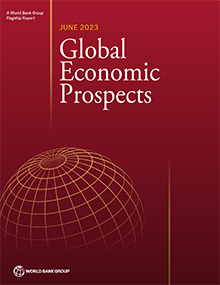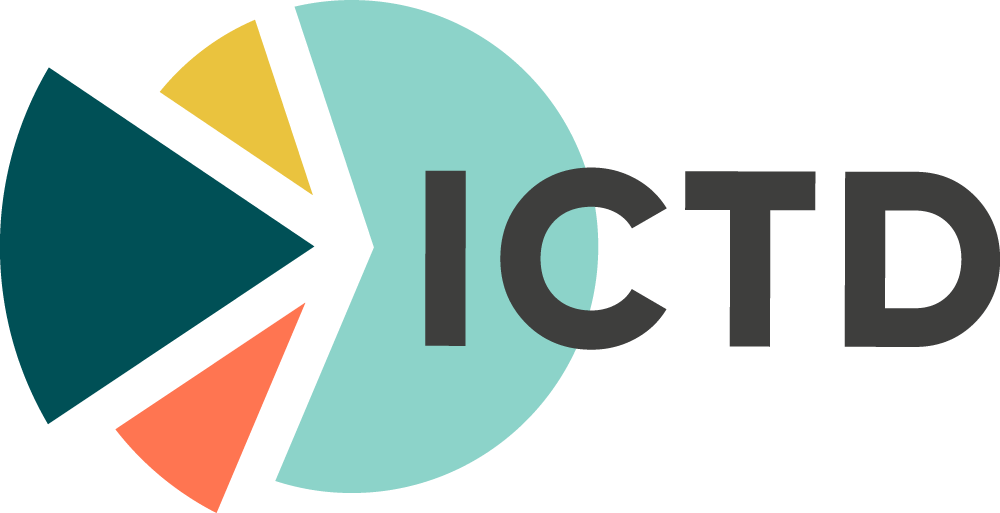The Global Economic Prospects 2023 report by the World Bank offers a comprehensive analysis of the global economy and its prospects for growth. Notably, it is projected to significantly slow to 2.1% in 2023, before a modest recovery to 2.4% in 2024. This is largely due to global financial conditions and weak external demand weighing on emerging and developing economies. Importantly, the report emphasizes that inflation expectations remain well-anchored and that financial systems remain resilient. Additionally, the report calls for policies to support a major increase in investment in emerging markets and developing economies (EMDEs). This includes seeking new financing from the international community and repurposing existing resources, such as inefficient agricultural and fuel subsidies.
Growth Decelerating:
Global GDP growth is expected to fall from 3.5% in 2022 to 3.0% in 2023 and further down to 2.9% in 2024. This decline is attributed to several factors:
- Tightening monetary policy: Central banks are raising interest rates to combat inflation, which dampens economic activity.
- Lingering supply chain disruptions: The pandemic’s impact on global supply chains continues to cause bottlenecks and price pressures.
- Geopolitical tensions: The war in Ukraine and other geopolitical uncertainties create volatility and hamper investment.
Still, while inflation is expected to decline from 8.7% in 2022, it remains a major concern, casting a shadow over consumer spending and business confidence. The report projects inflation to stay above pre-pandemic levels until 2024.
Diverging Regional Paths:
The slowdown will not be evenly distributed across regions:
- Advanced Economies: These economies, including the US and Europe, are expected to experience a sharper decline in growth, falling to 1.5% in 2023 and 1.4% in 2024. Tighter monetary policy and high inflation will be the main culprits.
- Emerging Market and Developing Economies (EMDEs): EMDEs are projected to have a more moderate slowdown, with growth stabilizing around 4.0% in 2023 and 2024. However, depending on individual countries’ vulnerabilities and policy responses, this group will have significant variations.
- East Asia and Pacific: This region is expected to be a relatively bright spot, with growth projected to strengthen to 5.5% in 2023, driven by a recovery in China.
Risks and Uncertainties:
The global economic outlook faces several downside risks:
- Escalation in Ukraine: The ongoing war could further disrupt supply chains, fuel inflation, and erode global confidence.
- Financial market turmoil: Tightening monetary policy could trigger financial instability, particularly in vulnerable EMDEs.
- Climate change: Extreme weather and climate change impacts could disrupt agricultural production and infrastructure, impacting economic activity.
Policy Recommendations:
The report calls for decisive policy action to navigate these challenges:
- Comprehensive policy packages: Includes fiscal and monetary measures to support growth, manage inflation, and protect vulnerable populations.
- International cooperation: Global coordinated efforts are crucial to address common challenges like inflation, supply chain disruptions, and climate change.
- Strengthening social safety nets: Governments should prioritize protecting vulnerable populations from the negative impacts of the slowdown through social safety nets and targeted support programs.
Regional Outlooks
East Asia and the Pacific
The region’s growth is recovering primarily due to strong activity in China. Consequently, it is projected to strengthen to 5.5% in 2023. However, it is expected to moderate to 4.6% in 2024 and further down to 4.5% in 2025. Several risks include tighter global financial conditions, high inflation, weakness in China’s real estate sector, geopolitical tensions, and climate change-related disasters. Policy action is needed to encourage sustainable and inclusive growth in response to these challenges. This includes encouraging infrastructure and human capital investment and implementing policies to address labor market informality and promote trade and regional integration.
Europe and Central Asia
Growth is expected to rise in 2023, primarily due to improved prospects for China and a handful of large economies. However, the ongoing impact of the Russian Federation’s invasion of Ukraine will persistently affect growth. In addition to this, the region is also susceptible to external risks, such as tighter global financial conditions and slower growth in major trading partners. Regarding policy challenges, there is a need for structural reforms, investment in infrastructure and human capital, and strategies to tackle labor market informality. Furthermore, trade and regional integration are crucial for achieving sustainable and inclusive growth.
Latin America and the Caribbean
Growth will slow in 2023 due to weak external demand, high inflation, and tightening financial conditions. This underscores the region’s vulnerability to external risks, including global financial stress and persistent inflation. Additionally, it highlights social and political challenges like inequality and political instability. The report strongly advocates for structural reforms, infrastructure and human capital investments, and policies to tackle labor market informality. It emphasizes trade and regional integration’s significant role in sustainable and inclusive growth.
It is projected to slow to 1.5% in 2023. Nonetheless, a recovery to 3.3% in 2024 for oil exporters is expected, while a decrease to 3.4% for oil importers is set to accelerate to 4.0% in 2024. Key risks include a further decline in external demand and changes in commodity prices. Moreover, increased social tensions, financial crises, and climate-related shocks pose substantial threats.
Middle East and North Africa
In 2023, the region experienced strong growth, particularly in oil-exporting economies, largely due to high oil prices. However, looking forward, potential risks such as sustained inflation in advanced economies and the possibility of stricter monetary policies are cause for concern. Regarding policy challenges and opportunities, structural reforms, infrastructure and human capital investments, and labor market policies are very important. Unfortunately, climate change and adverse events disproportionately affect the marginalized and poor members of society.
Specifically, countries like Egypt and Iraq face challenges in securing food and water supplies. Despite these challenges, it’s predicted that the region will experience a moderate recovery in 2023 and 2024, although the extent of this recovery will vary between oil exporters and importers. Therefore, it’s clear that the region needs to implement policies and reforms to enhance climate resilience, diversify income sources, improve governance, and reduce inequalities and poverty.
South Asia
An economic rebound in South Asia is predicted by 2023, primarily driven by global trade and investment recovery. However, it must be noted that financial sector stress and tighter global financial conditions could significantly impact heavily indebted regions. It also delves into key policy challenges and opportunities, such as the necessity for structural reforms, the importance of infrastructure and human capital investment, and potential solutions for labor market informality. Furthermore, it emphasizes the crucial role of trade and regional integration in fostering sustainable and inclusive growth.
Sub-Saharan Africa
Expected to be impacted by external factors, inflation, rising borrowing costs, and insecurity, Sub-Saharan Africa’s growth is projected to decelerate to 3.2% in 2023. This comes when many countries have not fully recovered from the pandemic, and the high cost of living has negatively influenced consumption growth. Despite these challenges, the region is projected to experience a growth rebound in 2024-25. However, it’s important to note that per capita income growth will be slower than needed for significant poverty reduction. Given these circumstances, it emphasizes the need for structural reforms, infrastructure and human capital investments, and strategies to address labor market informality.
Financial Spillovers of Rising U.S Interest Rates
Discusses the potential impacts of increasing U.S. interest rates on emerging markets and developing economies (EMDEs). The report indicates that reactionary shocks from a shift in the Fed’s stance can lead to tightened financial conditions, capital outflows, currency depreciation, and an increased likelihood of crises in EMDEs. This is particularly true for those with low credit ratings, twin deficits, or less developed financial markets. In light of these potential impacts, the report recommends improved communication among central banks, enhanced financial and fiscal resilience, and reinforcement of the global financial safety net to mitigate these risks.
Fiscal Policy Challenges in Low-Income Countries
These challenges include increased public debt and deteriorating fiscal positions. Persistent primary fiscal deficits and weak revenues are the main drivers of debt accumulation. The report emphasizes the need for LICs to enhance domestic resource mobilization, improve spending efficiency, and strengthen debt management practices. Additionally, it underscores the importance of international support, such as debt relief and grants, to address these challenges.
By April 2023, as stated in the report, 14 out of 28 LICs were either in debt distress or at high risk. The report details the origins of these persistent primary deficits, and highlights increased primary spending and weak revenues. Goods and services taxes and corporate income taxes have been key contributing factors.
In terms of policy options for LICs, it offers several suggestions. It proposes that LICs have significant scope to enhance domestic resource mobilization, improve spending efficiency, and manage debt more effectively. Furthermore, it emphasizes the need for structural reforms and international aid. For example, in the form of grants or more concessional loans to address emerging challenges such as the effects of climate change, fragility, and pandemics.
Finally, it discusses the increased public debt in LICs between 2011 and 2022. The public debt increased by 30 percentage points of GDP, almost double that of other emerging markets and developing economies (EMDEs), and reached 67% in 2022. Interestingly, it points out that over four-fifths of this public debt increase occurred well before the pandemic. This reflects persistent and growing primary fiscal deficits that more than offset the debt-reducing effects of economic growth.




